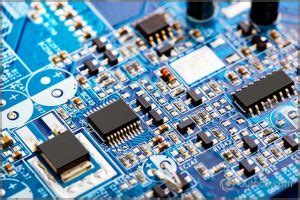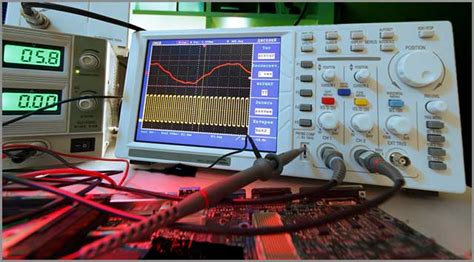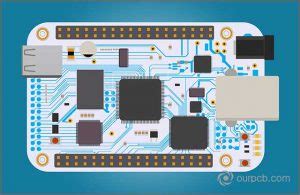Introduction to PCB Programming
PCB stands for Printed Circuit Board. In the context of programming, PCB refers to the low-level software that directly interacts with and controls the hardware of a device. PCB programming involves writing code that runs on a microcontroller or other embedded system to interface with the various electronic components on a PCB.
PCB programming requires an understanding of both hardware and software. A PCB programmer needs to know how to read schematics, understand the functionality of different electronic components, and write efficient code to control the board’s operation.
Key Skills for PCB Programming
To be proficient in PCB programming, one should possess the following skills:
- Knowledge of embedded systems and microcontrollers
- Familiarity with low-level programming languages like C, C++, or Assembly
- Understanding of electronic components and their functions
- Ability to read and interpret schematics and datasheets
- Experience with debugging tools and techniques for embedded systems
The PCB Programming Workflow
The PCB programming workflow typically involves the following steps:
-
Schematic Design: The first step is to create a schematic diagram of the PCB, which shows how the various components are connected.
-
Board Layout: Once the schematic is complete, the next step is to design the physical layout of the PCB, including the placement of components and routing of traces.
-
Firmware Development: With the hardware design finalized, the programmer can start writing the firmware code that will run on the microcontroller.
-
Testing and Debugging: After the firmware is written, it needs to be tested and debugged to ensure it works as intended. This may involve using hardware debuggers, logic analyzers, or other tools.
-
Deployment: Once the firmware is thoroughly tested, it can be deployed to the production PCBs and the device can be manufactured.

Popular Tools for PCB Programming
There are several popular tools used in PCB programming, including:
| Tool | Description |
|---|---|
| Altium Designer | A comprehensive PCB design tool with schematic capture, board layout, and more |
| KiCad | A free and open-source PCB design tool with schematic capture and board layout |
| EAGLE | A widely-used PCB design tool with schematic capture, board layout, and autorouter |
| Arduino IDE | An integrated development environment for programming Arduino microcontrollers |
| Microchip MPLAB X | An IDE for programming Microchip PIC and AVR microcontrollers |
| STM32CubeIDE | An IDE for programming STM32 microcontrollers |

Common PCB Programming Languages
PCB programming often involves using low-level languages that provide direct access to the hardware. Some common languages used in PCB programming include:
C
C is one of the most widely-used languages for PCB programming due to its efficiency and low-level access to hardware. Many microcontroller manufacturers provide C compilers and libraries specifically for their devices.
C++
C++ is an extension of C that adds object-oriented programming features. It is used in PCB programming when more complex data structures or abstractions are needed.
Assembly
Assembly language provides the lowest-level access to the microcontroller’s hardware. It is used when very precise control over the hardware is required, or when optimizing for speed or size.

Challenges in PCB Programming
PCB programming comes with its own set of challenges, including:
-
Limited Resources: Microcontrollers used in PCBs often have limited memory and processing power, requiring careful optimization of code.
-
Real-Time Constraints: Many PCB applications require real-time performance, meaning the firmware must respond to events within a specific time frame.
-
Hardware Dependencies: PCB firmware is tightly coupled to the specific hardware it runs on, making it less portable than higher-level software.
-
Debugging Complexity: Debugging embedded systems can be challenging due to limited visibility into the system’s state and the need for specialized hardware tools.
Best Practices for PCB Programming
To ensure success in PCB programming projects, consider the following best practices:
-
Plan Before Coding: Spend time upfront designing the system architecture and planning the firmware structure before writing code.
-
Write Modular Code: Break the firmware into modular components with clear interfaces to make the code more maintainable and reusable.
-
Use Version Control: Employ a version control system like Git to track changes and collaborate with other team members.
-
Test Early and Often: Test the firmware thoroughly at each stage of development, using both software simulations and hardware test beds.
-
Optimize for Power: Optimize the firmware to minimize power consumption, especially for battery-powered devices.
-
Document the Code: Write clear comments and documentation to make the code easier to understand and maintain.
PCB Programming Project Ideas
Here are some project ideas to practice and demonstrate PCB programming skills:
-
LED Matrix Display: Design a PCB with an LED matrix and write firmware to display text, graphics, or animations.
-
Motor Controller: Create a PCB to control a DC motor or stepper motor, with features like speed control and position tracking.
-
Environmental Sensor: Build a PCB with sensors for temperature, humidity, pressure, or other environmental variables, and write firmware to read and process the sensor data.
-
Wireless Communication: Design a PCB with a wireless module (e.g., Bluetooth or Wi-Fi) and write firmware to send and receive data wirelessly.
-
Audio Processing: Create a PCB with audio input and output, and write firmware to process audio signals, such as applying filters or effects.
Frequently Asked Questions
What is the difference between PCB design and PCB programming?
PCB design focuses on creating the physical layout of the printed circuit board, including placing components and routing traces. PCB programming, on the other hand, involves writing the software (firmware) that runs on the microcontroller to control the PCB’s functionality.
Do I need to know how to design PCBs to do PCB programming?
While it’s not strictly necessary, having knowledge of PCB design can be very beneficial for PCB programming. Understanding how the hardware is laid out and connected can help in writing more efficient and effective firmware.
What programming language should I learn for PCB programming?
C is the most widely-used language for PCB programming, so it’s a good place to start. However, depending on the specific microcontroller and tools being used, other languages like C++, Assembly, or even Python may be appropriate.
How do I debug PCB firmware?
Debugging PCB firmware often requires specialized hardware tools, such as in-circuit debuggers or logic analyzers. These tools allow you to step through the code, set breakpoints, and inspect the system’s state. Many IDEs also include software simulators that can help debug firmware without the need for physical hardware.
What is the career outlook for PCB programmers?
PCB programming is a critical skill in many industries, including consumer electronics, automotive, aerospace, and medical devices. As the demand for smart, connected devices continues to grow, the need for skilled PCB programmers is likely to remain strong. PCB programmers may work for electronics manufacturers, engineering firms, or as freelancers.
Conclusion
PCB programming is a specialized field that combines knowledge of hardware and software to create the firmware that brings electronic devices to life. It requires a unique set of skills, tools, and best practices to succeed.
By understanding the fundamentals of PCB programming, mastering the popular tools and languages, and staying up-to-date with the latest trends and techniques, you can build a rewarding career in this exciting and ever-evolving field.
Whether you’re just starting out or looking to expand your skills, there are plenty of resources and project ideas available to help you grow as a PCB programmer. So dive in, start experimenting, and see what you can create!

Leave a Reply